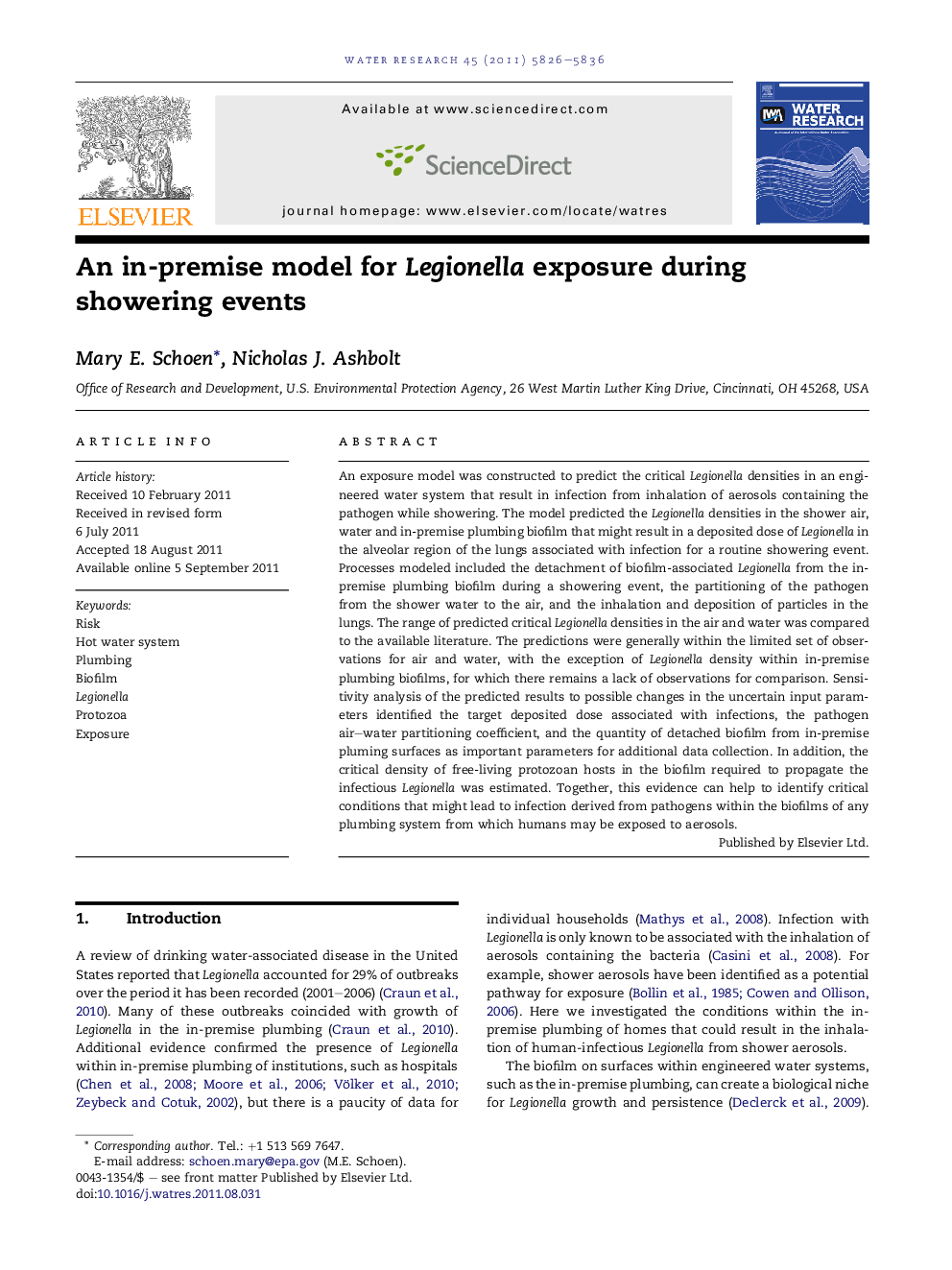| Article ID | Journal | Published Year | Pages | File Type |
|---|---|---|---|---|
| 4482667 | Water Research | 2011 | 11 Pages |
An exposure model was constructed to predict the critical Legionella densities in an engineered water system that result in infection from inhalation of aerosols containing the pathogen while showering. The model predicted the Legionella densities in the shower air, water and in-premise plumbing biofilm that might result in a deposited dose of Legionella in the alveolar region of the lungs associated with infection for a routine showering event. Processes modeled included the detachment of biofilm-associated Legionella from the in-premise plumbing biofilm during a showering event, the partitioning of the pathogen from the shower water to the air, and the inhalation and deposition of particles in the lungs. The range of predicted critical Legionella densities in the air and water was compared to the available literature. The predictions were generally within the limited set of observations for air and water, with the exception of Legionella density within in-premise plumbing biofilms, for which there remains a lack of observations for comparison. Sensitivity analysis of the predicted results to possible changes in the uncertain input parameters identified the target deposited dose associated with infections, the pathogen air–water partitioning coefficient, and the quantity of detached biofilm from in-premise pluming surfaces as important parameters for additional data collection. In addition, the critical density of free-living protozoan hosts in the biofilm required to propagate the infectious Legionella was estimated. Together, this evidence can help to identify critical conditions that might lead to infection derived from pathogens within the biofilms of any plumbing system from which humans may be exposed to aerosols.
► Densities of Legionella were predicted in shower air, water, and biofilm necessary for infection. ► The predicted Legionella densities in shower air and water were high and uncertain. ► Observations confirm that the predicted densities are possible but not necessarily a risk.
